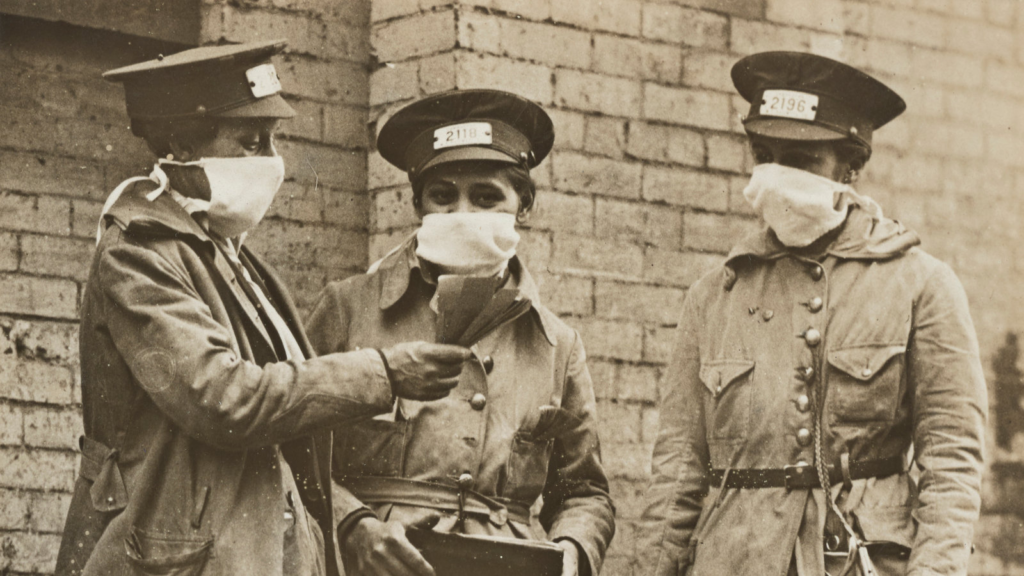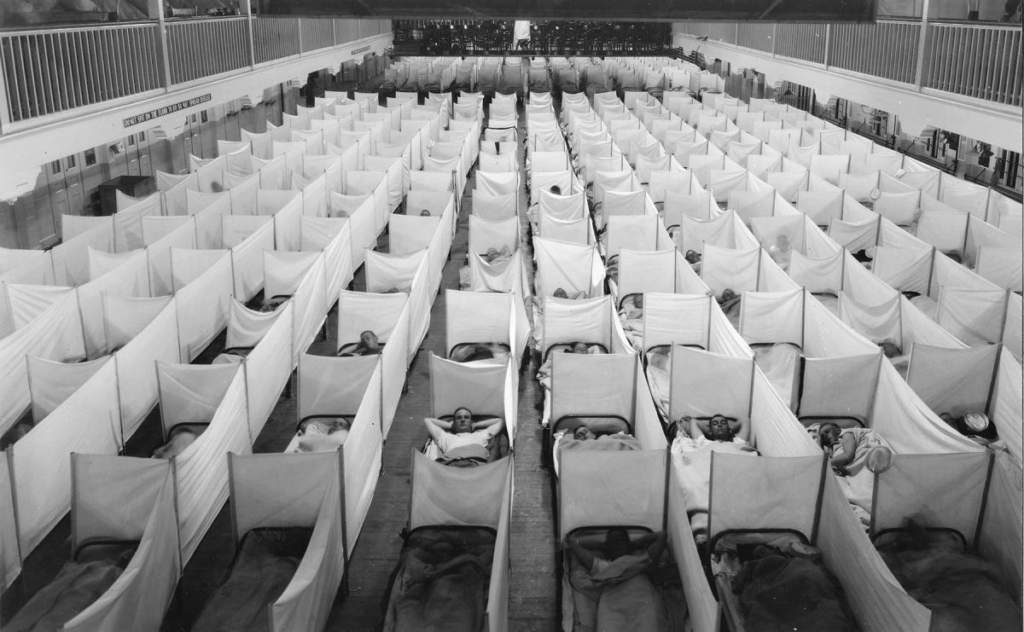The Spanish Flu in the U.S. arrived suddenly in 1918 and took the country by storm. Killing more than 675,000 Americans in just over a year, it caused widespread panic, reshaped local communities, and left a lasting mark on the nation’s public health systems.
Even though it was one of the deadliest events in U.S. history, the Spanish Flu faded from public memory. Today, we look back to uncover how local areas responded, the forgotten human stories behind the headlines, and the long-term effects it had on America’s health infrastructure.
What Was the Spanish Flu?
The Spanish Flu was an H1N1 influenza virus that appeared near the end of World War I. It infected about 500 million people worldwide and killed at least 50 million. In the U.S., the virus spread quickly, hitting in several deadly waves between 1918 and 1919.
Unlike seasonal flu, this strain killed many healthy young adults in their 20s and 30s, making it all the more terrifying. The speed at which it spread and the high death toll overwhelmed hospitals and left entire communities in crisis.

Local Responses Across the U.S.
Cities That Acted Quickly
Different cities responded in different ways—and the timing of their actions made a major difference. St. Louis acted fast, closing schools and banning public gatherings shortly after their first reported cases. As a result, the city had one of the lowest death rates among major urban areas.
Philadelphia, by contrast, delayed public health measures and allowed a large parade to proceed. Just weeks later, hospitals were overrun, and thousands of people had died. The delayed response was a tragic example of how inaction during a health crisis can have fatal consequences.
Public Health Measures
Most cities eventually took steps to slow the spread. These included:
- Closing schools, theaters, and churches
- Canceling public events
- Enforcing mask mandates
- Promoting hand-washing and hygiene
- Isolating the sick at home or in makeshift hospitals
San Francisco was one of several cities to introduce mask laws. Residents were fined for not wearing them in public, though resistance and public fatigue were common even then.
Some rural communities took matters into their own hands by cutting off outside contact entirely. Roads were blocked and travelers turned away to protect residents from the flu.
Stories from Everyday Americans
While national headlines focused on numbers and regulations, millions of personal stories played out quietly across the country.
Families and Community Support
Many families lost multiple members in a matter of days. In some towns, entire households disappeared. In others, neighbors stepped in to care for orphans and bring food to the sick. Small communities often relied on informal support networks when formal healthcare systems collapsed.
Volunteers and Makeshift Hospitals
With many doctors serving in World War I, there was a major shortage of medical staff. Volunteers—mostly women—trained quickly to serve as nurses. Churches, schools, and even large homes were turned into temporary hospitals. In some cities, Red Cross nurses went door-to-door, checking on the sick and offering basic care.
The bravery of ordinary citizens helped hold communities together when official resources were stretched thin or unavailable.
Limited Communication and Misinformation
Unlike today’s constant news cycle, Americans in 1918 got their information from newspapers and word-of-mouth. Unfortunately, wartime censorship often led newspapers to downplay the severity of the flu in order to maintain public morale.
As a result, many people underestimated the danger, leading to poor compliance with public health orders. The lack of accurate, timely communication only made the situation worse.
How the Spanish Flu Shaped Public Health in the U.S.
The pandemic exposed how unprepared local and federal governments were for a public health emergency of this scale. At the time, the U.S. had no national plan for responding to epidemics. Most health decisions were made at the local level, with inconsistent results.
Long-Term Changes to Health Infrastructure
In the aftermath, both local and national governments began to take public health more seriously. Changes included:
- More funding for public health departments
- Expansion of hospital facilities
- Better training for nurses and doctors
- Standardized disease reporting systems
- Creation of emergency response plans
These improvements laid the groundwork for modern institutions like the Centers for Disease Control and Prevention (CDC), which was established in the following decades.
Emphasis on Preparedness
The Spanish Flu also highlighted the importance of early action and coordination between cities, states, and federal agencies. It became clear that in any future health emergency, speed, communication, and community cooperation would be essential.

Why the Spanish Flu Was Forgotten
Despite its devastating impact, the Spanish Flu did not leave the kind of lasting public memory that wars or natural disasters often do. Historians suggest a few reasons for this:
- It occurred during the final months of World War I, which received more public attention
- There were no national memorials or major anniversaries
- The deaths were scattered and often treated as private family tragedies
- The country was eager to move forward after both the war and the flu
As a result, the pandemic was rarely taught in schools or discussed in media until the arrival of COVID-19 brought it back into focus.
Lessons That Still Matter Today
Looking back at the Spanish Flu in the U.S. offers several valuable lessons for handling public health crises today:
- Acting early saves lives
- Public trust and clear communication are critical
- Community-level action can have a national impact
- Strong, well-funded health infrastructure is a long-term investment
While the virus itself is long gone, its influence lives on in how we plan for and respond to modern pandemics.
Conclusion
The Spanish Flu in the U.S. was a tragic yet defining moment in American history. It revealed weaknesses in public health systems, challenged communities, and showed both the fragility and resilience of everyday life.
Though many stories have been lost over time, remembering this chapter allows us to honor those who suffered and learn from the experience. By understanding how local responses shaped the outcome, we can build a better, more prepared future.
Do Follow USA Glory On Instagram
Read Next – The Blue Highway Runaway Slaves: Secret Maritime Escape Routes






